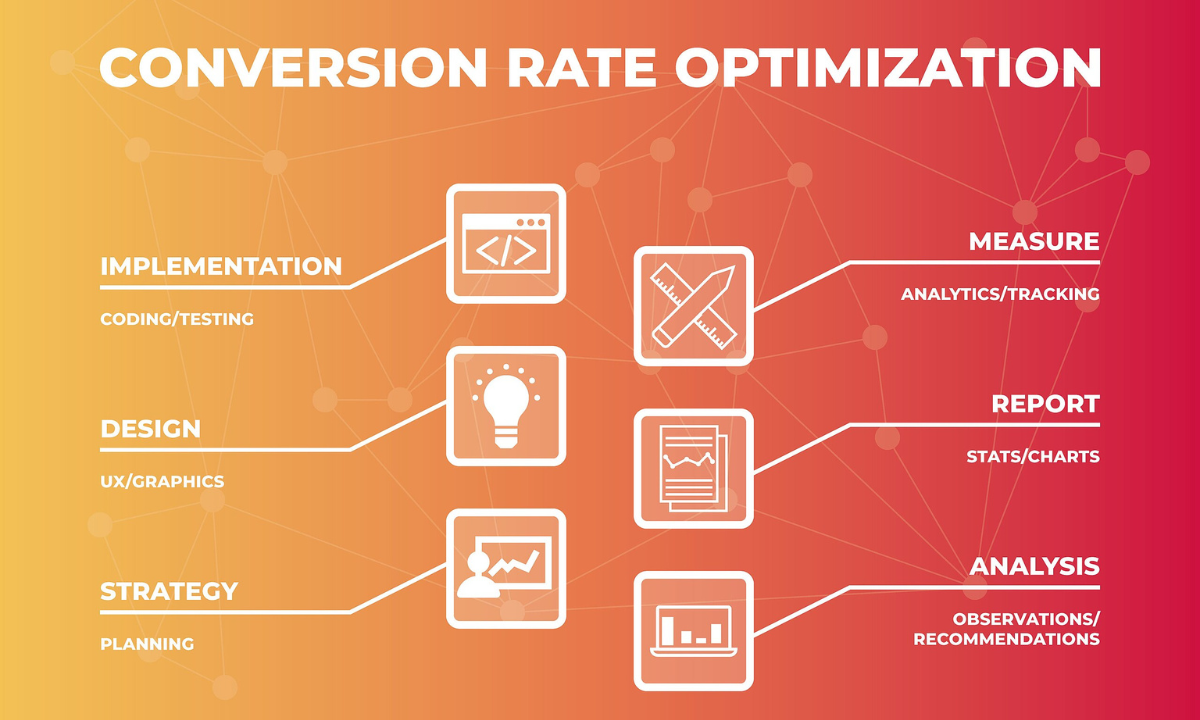Enhance Business Growth with Conversion Rate Optimization
Enhance Business Growth with Conversion Rate Optimization
Understanding Conversion Rate Optimization (CRO)
Conversion Rate Optimization (CRO) lies at the heart of effective digital marketing strategies. It focuses on enhancing the percentage of website visitors who complete a desired action, whether it’s making a purchase, subscribing to a newsletter, or downloading a resource. By optimizing your site for conversions, you not only increase engagement but also maximize the return on your marketing investments.
What Constitutes a Conversion?
In digital marketing, a conversion isn’t solely restricted to a sale. It encompasses any meaningful action taken by a visitor on your website. This could range from clicking on an ad to filling out a contact form or signing up for a webinar. Each action contributes to your business goals and is measurable, forming the basis for improving your Conversion Rate Optimization strategy.
Defining Conversion Rate for Conversion Rate Optimization
The conversion rate is simply the percentage of visitors who complete a desired action on your site, forming the cornerstone of your Conversion Rate Optimization (CRO) strategy. Industry benchmarks vary widely, but aiming to surpass average rates can yield substantial business benefits. For instance, while the average conversion rate for landing pages typically hovers around 2.35%, top-performing companies achieve rates exceeding 5.31%, with the very best surpassing 11.45%. Achieving and maintaining a high conversion rate is crucial for maximizing the effectiveness of your digital marketing efforts and driving sustainable business growth.
Benefits of Effective CRO
Implementing a robust Conversion Rate Optimization strategy offers several benefits:
- Understanding Customers Better: Insights gained from CRO efforts help in understanding customer behavior and preferences.
- Enhancing On-Site Experience: Improving user experience (UX) and interface navigation enhances visitor engagement.
- Optimizing Marketing Spend: By maximizing conversions, you can derive more value from your PPC and digital marketing campaigns.
- Increasing Sales and ROI: Higher conversion rates directly translate into increased sales revenue and better return on investment.
Key Metrics to Monitor for CRO
To gauge the effectiveness of your CRO efforts, it’s crucial to monitor key metrics using tools like Google Analytics:
- Traffic Sources: Identify where your visitors are coming from.
- Device Type: Optimize for different devices like desktops, tablets, and smartphones.
- Location and Localized Content: Tailor content to resonate with different geographical audiences.
- Exit Pages and Bounce Rates: Analyze pages where visitors exit to understand user behavior better.
- Conversion Rates by Visitor Type: Compare new versus returning visitors to refine targeting strategies.
- Value per Visit and Cost per Conversion: Measure the profitability of your marketing campaigns.
Effective Tactics for Conversion Rate Optimization
Here are eight proven tactics to enhance your website’s performance and drive conversions through Conversion Rate Optimization (CRO):
Optimize User Experience (UX)
A seamless user experience is pivotal to CRO success. Enhance UX by:
- Optimizing page layouts for clarity and visual appeal.
- Prioritizing mobile responsiveness and usability.
- Incorporating features like site search and live chat judiciously.
- Leveraging social proof like customer reviews to build credibility.
Refine Messaging Strategies
Align your messaging with customer expectations by:
- Tailoring landing page content to match ad messaging.
- Using lead magnets strategically to capture user data.
- Employing SEO best practices in title tags and meta-descriptions.
- Targeting high-intent users with focused content and CTAs.
Utilize Buyer Personas
Develop detailed buyer personas to:
- Understand customer motivations and pain points.
- Personalize content and site navigation to cater to specific audience segments.
- Tailor CTAs and content offers based on buyer journey stages.
Base Decisions on Data
Make data-driven optimizations by:
- Using analytics tools to track and analyze user behavior.
- Addressing high bounce rates and optimizing exit pages.
- Calculating and optimizing cost per conversion to maximize ROI.
Set SMART Goals
Establish Specific, Measurable, Attainable, Relevant, and Time-bound goals to:
- Focus efforts on tangible improvements in conversion rates.
- Implement targeted campaigns aimed at achieving measurable growth.
Test and Iterate
Deploy A/B and multivariate testing to:
- Compare variations in elements like headlines, CTAs, and layout.
- Validate hypotheses and refine strategies based on test results.
Conduct Competitor and User Research
Gain insights from competitors and user behavior to:
- Identify effective tactics and innovative approaches.
- Address usability issues and enhance overall user satisfaction.
Implement Continuous Improvement
Embrace a culture of ongoing optimization by:
- Documenting findings and insights from research and testing.
- Prioritizing enhancements that align with business goals and customer needs.
By integrating these strategies into your CRO efforts, you can systematically enhance your website’s performance, increase conversions, and ultimately drive business growth.
Conclusion
Incorporating Conversion Rate Optimization into your digital marketing strategy isn’t just about increasing numbers; it’s about fostering meaningful interactions and driving sustainable business growth. By focusing on understanding your audience, refining user experience, and leveraging data-driven insights, you can unlock new opportunities to enhance conversions and maximize your online presence.


